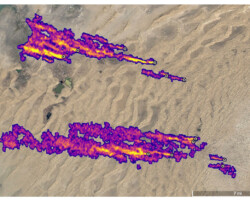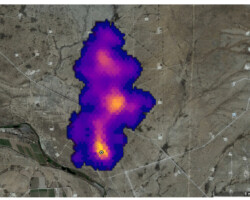While mapping the occurrence of key minerals in Earth’s dust-producing deserts, NASA’s Earth Surface Mineral Dust Source Investigation (EMIT) detected the presence of more than 50 super emitters of methane, a potent greenhouse gas.
The EMIT programme was launched to find information that will advance our understanding of airborne dust’s effects on climate. However, the data collected through the International Space Station since July has mapped super emitters in Central Asia, the Middle East, and the Southwestern United States.
Super-emitters are facilities, equipment, and other infrastructure, typically in the fossil-fuel, waste, or agriculture sectors that emit methane at high rates.
The new observations stem from the broad coverage of the planet afforded by the space station’s orbit, as well as from EMIT’s ability to scan swaths of Earth’s surface dozens of miles wide while resolving areas as small as a soccer field, according to NASA.
Methane absorbs infrared light in a unique pattern – called a spectral fingerprint – that EMIT’s imaging spectrometer can discern with high accuracy and precision. The instrument can also measure carbon dioxide.
Identifying methane point sources can be a key step in the process. With knowledge of the locations of big emitters, operators of facilities, equipment, and infrastructure giving off the gas can quickly act to limit emissions. Here are the photos released by NASA that show the impact of super-emitters:












